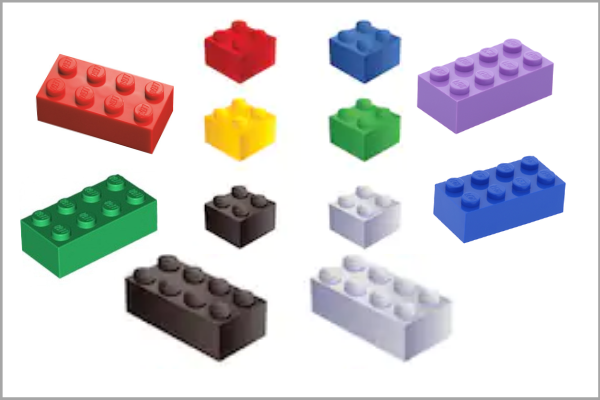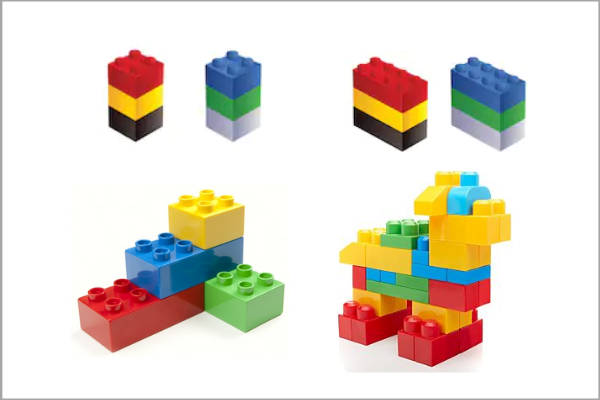Ever heard of DeFi? Maybe…Maybe not. Well, whatever your answer is, be sure to gain the utmost clarity about it today.
DeFi (short for Decentralized Finance) is a term for all the financial activities that have no central authority.
Though still in its infancy stage, DeFi is making waves and gaining more grounds as the day goes by.
By the time you are done reading through this post, you would have understood what DeFi is all about with all its components.
Let’s get started at once.
Post Summary
Here are the subheadings under which I will be discussing today’s topic:
- What is DeFi?
- Why Do We Need DeFi?
- DeFi Categories
- DeFi Money Legos
- Pros and Cons of DeFi
- DeFi Platforms
- Frequently Asked Questions (FAQs) About DeFi
- Conclusion
A click on any subheading shows you the full details.
Let’s begin today’s discussion in earnest.
What is DeFi?
Hold up!
Not a fan of reading? We ‘ve got you covered still.
We made a video explaining everything about DeFi.
You can go ahead and check out the video or scroll down to read up.
DeFi, which is short for Decentralized Finance, is a term for different decentralized financial services.
It being decentralized means that these services have no central authority guiding them.
These decentralized financial services are meant to replace the current centralized financial system.
DeFi relies greatly on cryptography, blockchain, and smart contract, with the later being its main building block.
Presently( October 2020), all DeFi apps are built on the Ethereum blockchain.
This is because Ethereum uses Solidity as its programming language. This Solidity allows you to put in all the logic needed for the DeFi apps.
Again, Ethereum has the most developed ecosystem among smart contract platforms with a good number of developers.
These developers keep building new apps.
Now you might be thinking to yourself: Why do we even need DeFi?
I explained that in the next subheading.
Why Do We Need DeFi?
The financial world today is one that is plagued with regulations.
Services ranging from money transfer, lending, insurance to saving plans, etc all make up the financial system.
The significant thing about them is that they are all centralized. There’s always a person, a team, or even a company that oversees their affairs.
Thus, they are rightly referred to as CeFi (Centralized Finance).
CeFi has the risk of fraud, funds mismanagement, embezzlement, etc associated with it.
But can there be a solution to all these risks? I mean can something like Bitcoin(which decentralized money) happen to CeFi?
That is why DeFi was created; to mitigate all these risks associated with CeFi.
Take for example, if you want to borrow money.
You will need to provide very vital personal information to the financial institution that will grant you the loan.
This way, a third party holds some sensitive information about you which is not very safe.
But DeFi works in a decentralized manner.
In the event of you getting a loan, you only need to provide a collateral for the loan and you have your loan.
No one needs to know your name, where you are from, and other personal information about you.
DeFi grants its users the privacy they seek; cutting off a lot of fees and charges that would have been the case in a CeFi system.
It’s just a case of DeFi trying to create a whole new financial system in a permissionless and open way.
Next, you will see the various categories where DeFi has been been put in use.
DeFi Categories
These include:
- Lending and borrowing
- Stablecoins
- Insurance
- Margin trading
- DEXs
- Derivatives
Get details below.
1. Lending and Borrowing
With DeFi, lending and borrowing works in a different way.
The biggest platform that does this(as at the time of this post) is Compound.
Compound is an algorithmic, autonomous interest rate protocol that is built for developers.
It allows its users to supply assets that will be lent out and users earn interest. They can also serve as collateral for borrowing other assets.
How this works is this:
When users supply their assets, they get cTokens in return.
These cTokens are ERC20 tokens that you can exchange for their underlying asset at any chosen time.
They are issued by Compound and are redeemed at the exchange rate of the underlying asset. For example, cETH is redeemable at the price of ETH at the moment.
The exchange rate increases over time depending on the rate of the interest that is earned by the underlying asset.
2. Stablecoins
Stablecoins is a cryptocurrency that is pegged to an asset with a stable value, such as gold or fiat money like the US dollar.
An example of a DeFi stablecoin is DAI, a crypto-backed stablecoin that is pegged to the U.S. dollar.
DAI is developed by MakerDAO(Decentralized Autonomous Organization) and runs on the Maker Protocol.
Here, users can deposit their ETH as collateral and are able to borrow DAI.
If you want to get your ETH back, you just pay the amount of DAI that you borrowed and your ETH is released.
To account for the volatility in the crypto collateral deposited, DAI is over collateralized.
This simply means that the required amount to be deposited is always higher than DAI’s value.
For example, users can be made to deposit 50ETH before they can borrow about 20 – 25 DAI.
This will ensure that the potential fall in the price of ETH is accounted for.
3. Insurance
This is a core part of CeFi that can be reproduced in DeFi.
Insurance is a contract/arrangement in which you(the insured) receive financial protection or reimbursement against losses from the insurance company(the insurer).
In DeFi, the most popular insurance application is the protection of your deposit and against smart contract failures.
The popular DeFi projects include Nexus Mutual, Etherisc, Opyn, and VouchForMe.
4. Margin Trading
Margin trading refers to the practice of using funds borrowed from a broker to increase the position in a certain asset.
The DeFi apps here include dY/dX, Margin DDEX, MCDEX, and Fulcrum.
5. Decentralized Exchanges(DEXes)
DEXes are cryptocurrency exchanges that operate in a decentralized way i.e without a central authority.
It allows for cryptos to be exchanged in an open and permissionless way.
DEXes can be:
- Liquid Pool based – Kyber, Uniswap, Bancor, Balancer, Curve, etc
- Order Book based – IDEX, LoopRing, etc
6. Derivatives
Derivatives are contracts that derive their value from an underlying asset’s performance.
Now, this underlying entity can either be an asset, index, or an interest rate.
Examples are mStable, Idle, Synthetix, Yearn.finance, CHAI.money, etc.
Here you have some of the categories of DeFi.
In case you are wondering if you can combine these categories or not, that is exactly what I discussed in the next section.
Just scroll down.
DeFi Money Legos
DeFi was set up for interoperability i.e to readily interact with other systems.
This way, the different categories can be fused together with each other… Just like legos. Hence the name ‘Money Legos’.
As more users utilize the DeFi process, pieces of different categories are stacked together. These pieces in turn get combined together in many creative ways.
Now when new users get into the legos ecosystem, they will see some already preassembled legos combination.
With this, they can go ahead to create better and more beautiful things.
In other words, instead of these:

You have these to start up with.

Eventually, this metamorphoses into a whole new planet of interesting legos creations.
Note that DeFi projects are not designed to be utilized as stand-alone products.
Rather, they are ones that can be integrated into other products that can gain from their functionality.
This way, the ecosystem, with time, will snowball into an exciting world of DeFi products.
Moving on, I will be talking about the pros and cons of DeFi.
Stick with me.
Pros and Cons of DeFi
Pros
- Permissionless
- Stable
- Flexible
- Not censored
- Secured
Cons
- Issues of network fees
- Slow transactions because of a congested network
- Corruption flow due to no legality(stolen funds can be circulated)
- Bugs in smart contracts
I listed some DeFi platforms below. Let’s check them out.
DeFi Platforms
Some of the platforms where you can carry out DeFi activities include:
1. Compound
This is a smart contract that is built on the Ethereum Blockchain and is accessible to all.
Its interest rate is 2.14% and it supports the following assets: ETH, WBTC, ZRX, USDT, REP, USDC, SAI, BAT, DAI.
2. Maker
This is another Ethereum-based open-source protocol.
The interest rate is 4.6% and it provides support for the following assets: WBTC, ETH, USDC, and BAT.
3. Aave
Just like the aforementioned platforms, Aave is also built on the Ethereum Blockchain.
Aave supports BAT, DAI, ETH, MANA, KNC, REP, KNC, LINK, MKR, SNX, etc with interest rates of 0.25 and 0.09%.
4. dYdX
dYdX is an open trading platform for crypto assets.
It supports ETH, USDC, and DAI with its loans on 115% self liquidation and 125% collateral.
5. bZx
bZx is an open finance protocol where you can build applications.
These(applications) empower lenders, borrowers, and traders with a flexible decentralized finance protocol on Ethereum.
The assets supported include BAT, KNC, LINK, ZRX, ETH, DAI, USDC, SAI, etc.
Other platforms are Dharma, Mainframe, InstaDApp, etc.
I answered some of DeFi’s frequently asked questions. Check them out in the next section.
Frequently Asked Questions(FAQs) About DeFi
Can’t really say any of them is better as they complement each other. You can say DeFi is an improved version of CeFi.
As to which of them is better, it solely depends on the user to decide which to use or the one that is more convenient.
You can make money from DeFi when you lend out your coins and earn interest on it.
To do that, you have to create an account with an exchange and buy ETH. After that, download MyEtherWallet(MEW) and withdraw your ETH to it.
You will now go-ahead to swap your ETH for DAI. You can use DEX.AG for that.
Now that you got some DAI in your wallet, you can supply it to any lending platform and start earning profits on it.
Though yet to attain mass adoption, the future looks very bright for DeFi. I mean with the world going digital and as a result, crypto too, the world of finance is tilting towards DeFi.
It is the fastest-growing sector of finance and its users earn a lot of interest from lending platforms.
Most DeFi applications are built on the Ethereum blockchain and are in control of a huge chunk of digital assets.
PS: If you want to learn how to trade cryptocurrencies profitably, then enroll for our Crypto Trading Mastery Course by going to www.ctmastery.com. You can also join our Telegram community at https://t.me/ctmastery.
Conclusion
That is all I have for today’s review.
Guess you have learnt a lot?
Now, for this very last part, I will need you to provide me with your thoughts on the questions below. You can also ask me the questions you might have.
So tell me:
Do you see DeFi gaining massive adoption in years to come?
Have you used any of the DeFi platforms? What was your experience?
Do you have plans of developing a DeFi platform or lego?
Let me in on you thoughts and ask your questions too in the comment box below.
Use the share buttons to share this post with family and friends.



Could you do comprehensive write up on how to earn money from DEFI. Thanks